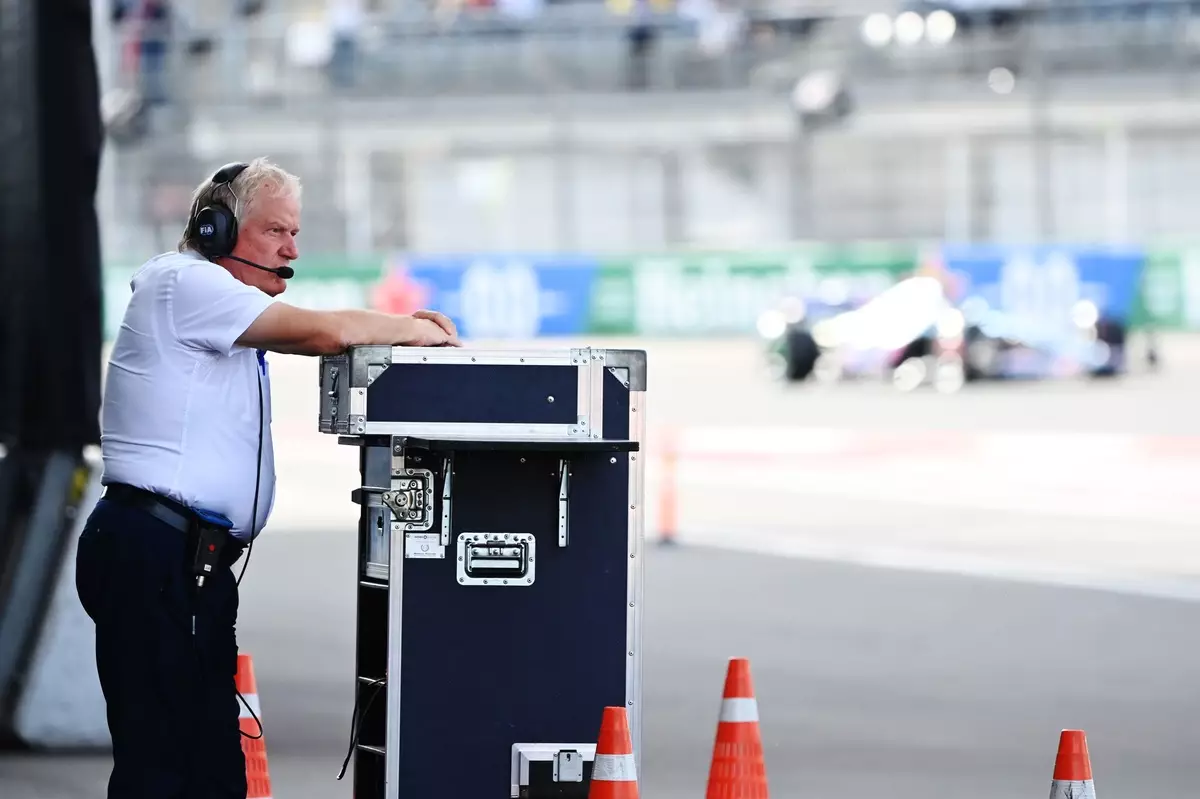In the world of Formula 1, where precision engineering and strict adherence to regulations are paramount, the integrity of the sport is perpetually under examination. Recent suspicions have stirred the paddock regarding a potential manipulation of car ride height adjustments that might contravene parc ferme regulations, particularly pertaining to the front bib or the T-tray of the car. This intrigue has prompted the FIA to closely monitor the situation during the United States Grand Prix, illuminating the ongoing tension between innovation and regulation in motorsport.
Teams have reportedly engaged in discussions with the FIA amidst growing concerns that a single undisclosed competitor may have devised a sophisticated mechanism allowing for adjustments to the front bib between the qualifying round and the actual race. If true, this development presents notable implications for the strategic dynamics of F1—specifically, the balance between optimizing performance during low-fuel qualifying laps versus accommodating the heavier weight of cars during race conditions.
The potential for adjusting the front bib, even if by a fraction, could afford distinct competitive advantages, influencing both aerodynamic efficiency and overall lap times. However, this kind of adjustment could starkly contradict Article 40.2 of the F1 Technical Regulations, which prohibits modifications to the aerodynamic characteristics of the car while in parc ferme. The rules sharply delineate allowable changes, strictly restricting aerodynamic modifications primarily to the front wing after cars have been set for the race.
Technical Regulations and Compliance Challenges
Article 40.9 further emphasizes the commitment to maintaining a level playing field by reiterating that teams “may not modify any part on the car” once it enters parc ferme. In a sport where every millisecond counts, the possibility of altering a fundamental component like the front bib raises serious ethical and regulatory questions. The FIA has also highlighted a procedural requirement stating that any changes should be readily observable and that modifications should not be easily facilitated without proper tools.
However, the crux of the current concern lies in the intelligence suggesting that a particular team has engineered its vehicle designs to allow for some degree of adjustment within the cockpit—a move that could elude the thorough inspections usually conducted between sessions. This potential breach of conduct not only hints at an elaborate technological loophole but also ignites discussions about the lengths to which teams might go to gain a competitive edge.
While the FIA has asserted that they have no explicit evidence to confirm such practices are currently in play, the governing body has taken proactive steps to enhance regulatory enforcement starting at the upcoming Austin race. The potential need for seals on any devices used for T-tray angle adjustments indicates the FIA’s commitment to upholding the regulations and addressing any suspicions vigorously.
Maintaining the Integrity of Motorsport
In a season marked by fierce competition and tightly contested battles for both driver’s and constructor’s championships, the stakes are higher than ever. With six races left on the calendar, the implications of any rule violations reverberate throughout the paddock and among fans alike, who expect a fair contest among drivers who deploy innovative technology within the confines of the rulebook.
An FIA spokesman articulated the organization’s unwavering vigilance: “Any adjustment to the front bib clearance during parc ferme conditions is strictly prohibited by the regulations.” This statement doubles as both a reassurance to the teams and a timely warning to anyone contemplating stretching the boundaries of compliance.
The excitement of the ongoing season encapsulates the pulse of F1—where advances in technology occur at breakneck speed, but so do the challenges of governance and oversight. As the FIA embarks on more rigorous policing of car specifications, the shadow of this potential height adjustment trick serves as a critical reminder that within the art of racing, the interplay of innovation and integrity must continually be maintained.
The scrutiny of potential technical violations like those concerning the T-tray reinforces the dual nature of Formula 1 as both a sport and a high-tech engineering marvel, constantly balancing the desire for maximum performance with the necessity for strict adherence to regulations. The unfolding narrative will not only shape the immediate season but could also set precedents for future competitions in a sport that thrives on progress yet is deeply rooted in tradition.


Napsat komentář